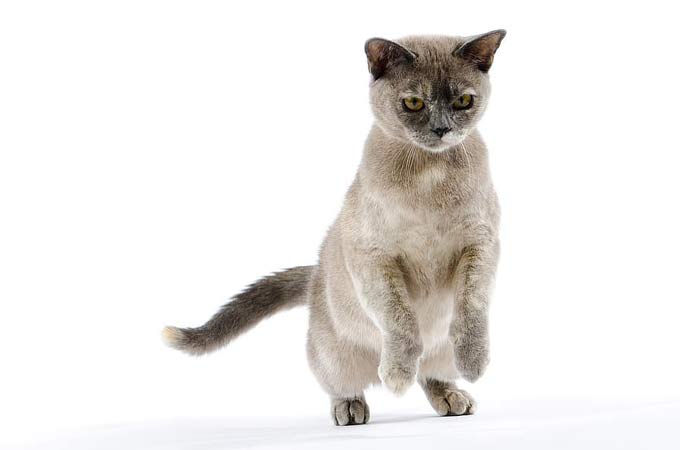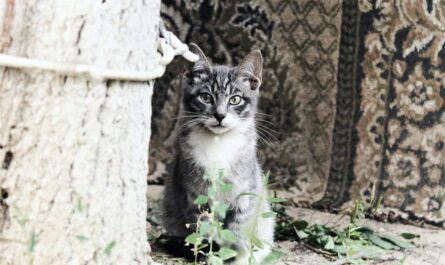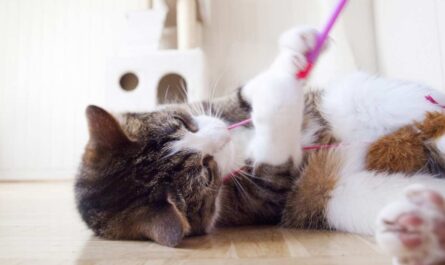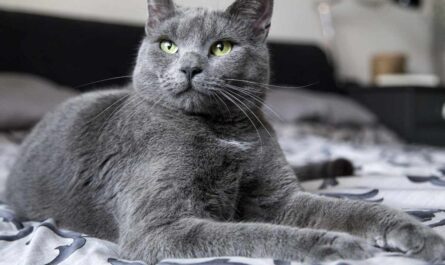Why do cats chirp or chatter? The phenomenon of cats chirping or chattering is a rich tapestry woven with threads of instinct, communication, mimicry, and play. Each chirp, with its nuanced cadence, invites us to delve deeper into the intricacies of feline behavior, offering a glimpse into the mysterious world of our beloved and endlessly fascinating companions. This article will share insight into why cats chirp or chatter. Keep reading.
The Enigmatic World of Cat Communication
Our feline companions, with their sleek coats and mesmerizing eyes, are captivating creatures that possess a rich and diverse vocal repertoire. Among the intriguing sounds they produce are not just the familiar meows but a symphony of chatter, chirp, tweet, and other amusing expressions. These vocalizations, however, only scratch the surface of the complex ways in which cats communicate with the world around them.
Deciphering Feline Communication
Cats, being the enigmatic beings that they are, utilize various sensory systems to convey their emotions and intentions. Their communication extends beyond vocal signals to encompass visual, olfactory, tactile, and auditory cues. Despite this complexity, understanding the nuanced meaning behind a cat’s chattering or other communicative behaviors can often be as elusive as catching a sunbeam.
Unraveling the Mystery of Cat Chattering
When it comes to the peculiar phenomenon of cat chattering, interpreting its significance requires delving into the intricacies of feline behavior. The chattering sound typically emerges when the cat encounters unattainable prey. This peculiar vocalization is characterized by a rapid opening and closing of the mouth, creating a sequence of short, clicking-like noises interspersed with brief pauses of silence.
Theories Behind the Chatter
Several theories attempt to unravel the mystery of why cats engage in chattering. One such theory proposes a connection to the predatory “kill bite” behavior, suggesting that cats use chattering to simulate the precise bite that severs the spinal cord of their prey. Another intriguing theory emerges from the wild, where researchers discovered a wild cat species mimicking the sounds of tamarin monkeys to lure them from trees in the Brazilian Amazon, sparking speculation about the psychological cunning of domestic cats.
Chattering in the Feline World
When a cat directs its chatter toward birds, its body language becomes a visual narrative of feline fascination. Tension radiates through a tense body, wide-open eyes, outward-pointing whiskers, vibrating tails, and rippling skin. This spectacle unfolds when the elusive prey is perched high in a tree or visible through a window, triggering the cat’s innate hunting instincts.
Chattering with a Purpose: Humans
While chattering at birds is a common feline behavior, some cats extend this vocalization to humans. This occurs during playtime as a manifestation of arousal or excitement, or in moments of frustration when communication with their human companions falls short of expectations. Notably, certain cat breeds, such as the intelligent and social Siamese, may chatter persistently to capture their owner’s attention.
In the Feline Social Tapestry: Chattering Among Cats
The hypothesis linking cat chattering to inter-feline communication is rooted in the maternal behavior displayed during the rearing of kittens. From the queen’s initial purring to communicate with the kittens to the chirping noises during feeding time, these vocalizations create a language within the feline family. Just as kittens respond to their mother’s calls, adult cats may use chattering to communicate and reinforce social bonds within the colony.
Common Reasons Why Cats Chirp or Chatter
In the complex and multifaceted world of cat communication, chattering emerges as a fascinating yet puzzling thread, weaving together elements of instinct, mimicry, and emotional expression. Understanding the nuanced language of our feline companions adds layers of richness to the bond between humans and these mysterious creatures.
1. Frustration Unveiled: The Vocal Expression of Elusive Desires
Venturing beyond the melodic mimicry, the enigma of cat chirping unfurls another layer – an emotional tapestry woven with threads of frustration and impatience. Picture the scene: a feline companion fixated on a tantalizing toy, just beyond the stretch of its agile paws, or an elusive insect playfully dancing just out of reach.
In these moments of tantalizing unattainability, the frustration of thwarted desire finds its voice in the form of peculiar vocalizations. The cat, unable to seize its coveted prize, vocalizes its impatience, creating a symphony of discontent that resonates through the air. It’s as if the very essence of the chase is translated into a vocal dimension, a sonic representation of the fervent pursuit unfolding before our captivated eyes.
2. Communication Conundrum: Chirping as Feline Linguistics Unveiled
In the rich tapestry of feline communication, chirping emerges as a linguistic puzzle, an intricate code that cats employ to convey subtle messages to their fellow feline companions. Renowned for their nuanced methods of expression, cats introduce a fascinating layer to their communicative repertoire through chirping. Some experts theorize that this vocalization might serve as a form of communication between cats, particularly when faced with potential prey.
The hypothesis suggests that chirping functions as a signal, a coded message that alerts other felines to the presence of something noteworthy. In the labyrinthine world of cat communication, chirping unfolds as a nuanced language, a mysterious dialect that humanity is just beginning to decipher, adding an element of intrigue to the intricate social dynamics of our feline friends.
3. The Joyous Hunt: Chirping as Prelude to the Predatory Symphony
Dive into the depths of the feline psyche, and you will discover that chirping is not merely a random assortment of sounds but a melodic prelude deeply intertwined with the joy of the hunt. Imagine a cat positioned by a window, eyes fixated on unsuspecting prey, or embarking on an outdoor adventure with the prospect of a potential chase.
In these moments of feline ecstasy, the anticipation and excitement materialize in the form of unique vocalizations – a symphony of chirps and chatters that serve as a thrilling soundtrack to the impending pursuit. It’s as if the cat, mentally preparing for the hunt, channels its predatory instincts into an audible overture, transforming the act of stalking into a sensory experience that captivates both the hunter and the audience alike.
4. Technological Temptations: Feline Responses in the Digital Era
In this era dominated by technology, an intriguing facet of feline behavior emerges, inviting exploration into the impact of modern devices on our beloved cats. Cat owners, a keen-eyed bunch, have observed a captivating phenomenon – their pets engaging in spirited chirping at the sight of birds or other virtual prey displayed on screens.
The fusion of lifelike visuals and elusive digital creatures acts as a catalyst, awakening the innate hunting instincts of felines. What unfolds is a mesmerizing display of animated chirping, a testament to the adaptability of cats as they seamlessly integrate contemporary stimuli into ancient hunting instincts. This intersection of technology and instinctual behavior unveils a captivating dimension in the ongoing saga of the human-feline relationship.
5. The Symphony of Play: Chirping as a Playful Serenade
Cats, those enchanting maestros of playfulness, orchestrate a mesmerizing symphony of antics that includes the enigmatic art of chirping. This vocalization, akin to a playful sonnet, often accompanies moments of heightened excitement during feline play. Picture a cat, a nimble dancer in the theatre of play, engaged in a spirited game of chase with a feathered toy. The rhythmic cadence of chirping becomes an audible accompaniment, adding a melodic dimension to the ballet of agility and amusement. This harmonious fusion of movement and sound serves as a manifestation of the cat’s playful prowess, a theatrical display that captivates both observer and participant in the whimsical dance of feline frolic.
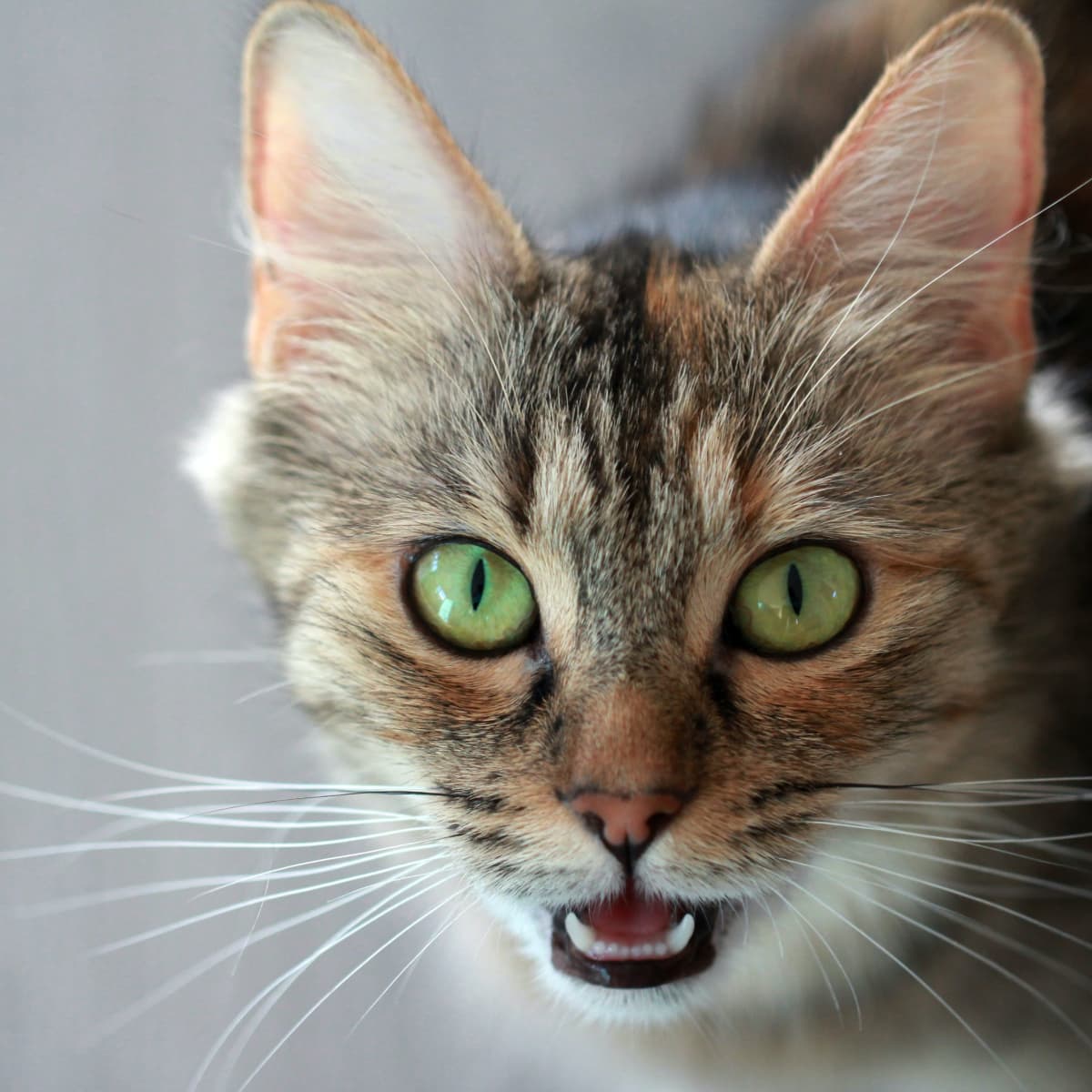
6. Medical Murmurs: Chirping as a Silent Cry for Help
In the labyrinth of feline behaviors, chirping unveils itself not merely as a quirky inclination but potentially as a poignant signal of underlying medical mysteries. In certain instances, this seemingly innocuous vocalization could be a subtle but significant indicator of an ailing feline. Dental issues, in particular, emerge as a poignant link to chirping behavior in cats.
The discomfort stemming from dental problems finds expression in these vocalizations, transforming chirps into a mysterious language through which cats communicate their physical distress. As feline companions’ guardians, recognizing the nuanced dialogue embedded in their chirps becomes paramount, urging pet owners to heed these subtle medical cues and seek timely veterinary attention. In these instances, chirping transforms from a mere behavioral oddity into a silent plea for care and compassion from our feline friends.
7. Intriguing Serenades: Unraveling the Vocal Enigma of Felines
Cats, those enigmatic and charismatic cohorts of our daily lives, introduce us to a mesmerizing symphony beyond the familiar meows and gentle purrs. Within the diverse repertoire of feline vocalizations, a particularly captivating behavior emerges – the ethereal chirping or chattering that paints a mysterious layer onto the canvas of their communication. This distinct vocalization, a tantalizing enigma, leaves both pet owners and curious observers pondering the profound reasons concealed within the subtleties of this beguiling behavior.
8. The Allure of Mimicry: Feline Imitation as an Art Form
Delving into the captivating world of cat chirping, a mystique unfolds in their inherent penchant for mimicry. These agile beings, finely tuned to the nuances of their surroundings, unveil a vocal artistry that mirrors the sounds of birds or other diminutive prey. Imagine a feline poised on a windowsill, eyes locked onto a fluttering bird in the distance.
The ensuing chirps become more than mere vocalizations; they transform into an instinctual attempt to emulate avian chatter, a skill sculpted by the evolutionary forces of hunting strategy. This mimicry, a testament to their predatory prowess, not only echoes the wild origins of our domesticated friends but also intricately weaves an additional layer of complexity into the rich tapestry of feline communication. The mimicry mystique becomes a poetic ode to the ancestral survival instincts embedded in the very fabric of our feline companions.
9. Pain’s Silent Cry: Chattering Due to Discomfort
In the intricate web of feline communication, chattering may also serve as a silent cry for help. When cats experience pain, they might resort to meowing and chirping to communicate with humans, as vocalization is less common in inter-cat relationships. Oral conditions and dental diseases, often overlooked due to feline aversion to mouth examinations, can lead to teeth-chattering. Vigilance for signs such as dribbling, pawing at the mouth, and smelly breath is crucial in identifying potential sources of discomfort.
FAQS
1. Why do cats make chattering noises?
The enigmatic symphony of sounds that emanates from our feline companions encompasses a fascinating range of vocalizations. Among these, teeth chattering, or simply “chatter,” stands out as a unique and intriguing behavior exhibited by many cats. The vocal range of house cats, as delineated by early studies (Moelk, 1944; McKinley, 1982), includes sounds produced with a closed mouth, those generated with an opening-closing mouth, and those created with a tensely held open mouth. Chattering, characterized by fast-clicking sounds and shuddering jaws, falls into the second category.
Decoding the Chatter: A Multifaceted Expression
Teeth chattering in cats often occurs in response to specific stimuli, with birds, squirrels, or mice capturing their attention. It manifests as a rapid succession of clicks or chirps, a behavior akin to playing with prey-like toys, such as those adorned with feathers. The interpretation of this behavior is as diverse as the vocal range itself. Some attribute it to emotional frustration, while others see it as a manifestation of predatory excitement, and in some cases, both. Understanding the nuanced reasons behind cat chatter adds layers to the intricate tapestry of feline communication.
2. What is cat chattering?
High-pitched chatter and chirp, not exclusive to domestic cats, find resonance in the vocalizations of wildcats, crickets, guinea pigs, and even rats. This widespread behavior harkens back to the hunting instincts deeply ingrained in feline evolution. Wildcats, with their ability to mimic the calls of prey, have passed down this vocal response to their domestic counterparts. The sound is triggered by the tantalizing movements of a bird or insect, capturing the cat’s attention and prompting the instinctive chatter or chirp (Schötz, Susanne 2013). In the domestic setting, this behavior persists, offering a glimpse into the untamed essence that dwells within our feline friends.
3. Do all cats chatter?
Chattering is not an exclusive trait reserved for certain breeds or age groups. It is an instinctive behavior woven into the very fabric of cat communication, displayed by both domestic and wildcats across various breeds and age ranges. This universal nature underscores the primal roots of this intriguing vocalization, emphasizing its significance in the broader spectrum of feline expression. Cat accessories on Amazon
4. Why do cats chatter at laser pointers?
The perplexing phenomenon of cats chattering at laser pointers unravels a tale of frustration-provoking play. As the laser light dances elusively, evading the cat’s attempts to capture it, a sense of irritation may ensue. Chattering, in this context, becomes a vocal expression of the cat’s inability to catch and manipulate the elusive “prey.” However, a cautionary note is sounded: laser pointers should not stand alone as the sole source of hunting pursuit. Instead, they should be seamlessly integrated into a play routine featuring other toys that the cat can physically apprehend and “kill.”
5. Why do cats chatter when I sneeze?
The peculiar scenario of cats chattering when their human counterparts sneeze adds another layer of mystery to feline behavior. While cats typically jump or run away from loud noises, the specific response of chattering to sneezes remains largely unexplained. Theories emerge, suggesting mimicry behavior adapted from kittenhood or a form of communication where a chatty cat imitates the owner’s sneeze, possibly indicating a level of annoyance or displeasure. The intricate dance of feline communication continues to weave a captivating narrative that invites further exploration and understanding.
Other Interesting Articles
- Turkish Vankedisi Cat Profile, Traits, Health, Grooming, Care
- Ukrainian Levkoy Cat Breed: Profile, Traits, Grooming, Care
- Ussuri Cat Breed: Profile, Traits, Personality, Grooming, Care
- York Chocolate Cat Breed: Profile, Traits, Health, Care
- Tonkinese Cat Breed: Profile, Traits, Health, Grooming, Care
- Siberian Cat Breed: Profile, Traits, Health, Grooming, Care
- How to Perfectly Place A Litter Box for Your Cat? 46 FAQs
- 17 Best Types of Toys to Play at Home with Your Cat
- Snowshoe Cat Breed: Profile, Traits, Health, Grooming, Care
- Munchkin Cat Breed: Profile, Traits, Personality, FAQs, Care
- Minuet Cat Breed: Profile, Traits, Personality, Grooming, Care
- Persian Cat Breed: Profile, Traits, Personality, Health, Care
- Ragdoll Cat Breed: Profile, Traits, Personality, Grooming, Care
- Scottish Fold Cat Breed: Profile, Traits, Personality, FAQs, Care
- Russian Blue Cat Breed: Profile, Traits, Personality, FAQs, Care
- Balinese Cat Breed: Profile, Traits, Personality, Care, Facts
- Australian Mist Cat Breed: Profile, Traits, Personality, Care
- Abyssinian Cat Breed: Profile, Traits, Personality, Care, Facts
- Bengal Cat Breed: Profile, Traits, Personality, Care, Grooming
- Birman Cat Breed: Profile, Traits, Personality, Care, Grooming
